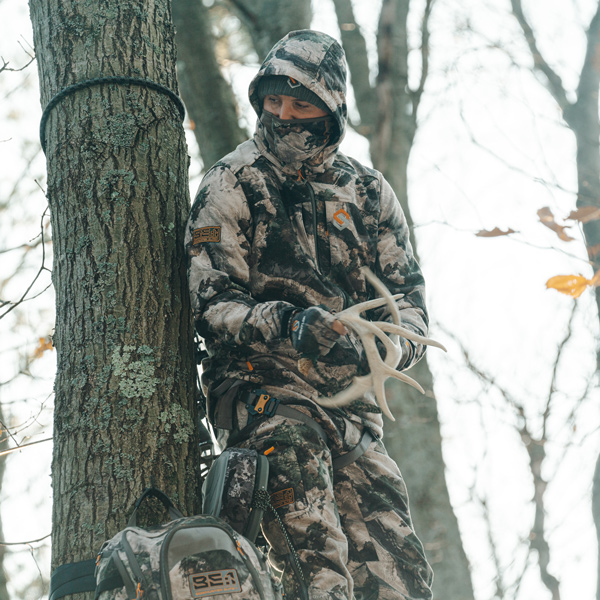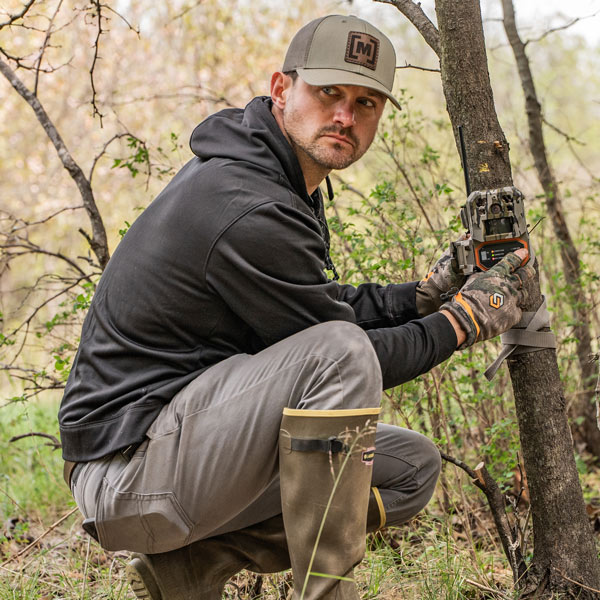When it comes to deer hunting, especially during the prime months of October and November, knowing the ins and outs of grunt calls and rattling techniques can significantly enhance your chances of a successful hunt. Dylan Ray, an avid hunter and the host of Bear Archery's Hunting 101 Podcast, shares his insights on the best times to use grunt calls and how to control the volume when using these calls and rattling techniques.
One of the most common questions among deer hunters is when to use a grunt call. Dylan Ray suggests that the sweet spot for utilizing grunt calls stretches from Halloween Day through Christmas. During these months, deer are more active, particularly bucks who are in pursuit of mates. The urge to communicate with other deer, especially the lure of potential rivals, makes this time ideal for grunt calls. Dylan says he harvested a buck in Oklahoma last year on December 10th using a grunt call. “I grunted a buck from a hundred yards away and shot him at seven yards.”
The frequency of using grunt calls can make or break a hunting expedition. Dylan advises that you should use a grunt call every 45 minutes, but with a slight variation if you've pinpointed the location of a buck. In such a scenario, combining grunts with scents, decoys, and rattling can more effectively attract deer to your position.
In the morning, Dylan starts using his grunt call about five minutes before legal shooting light. This timing strategy is clever; by the time a deer responds, it's typically legal shooting light, ensuring you have a clear shot. On Halloween in 2018, Dylan shot a buck moments after legal shooting light occurred. “After making my first call, the buck came in and made a couple of scrapes, allowing enough time for me to wait on legal shooting hours. A few minutes after legal time, I made the shot on a great buck,” says Dylan. However, when the night falls, he stops calling 30 minutes before the end of legal light. “One of the biggest mistakes many hunters make is calling right up to the time to get out of the treestand,” says Ray. He added that deer may respond to the call after dark, and often, a hunter can spook them while leaving the area due to never seeing them. This precautionary measure is designed to prevent a deer from coming into shooting range when it's too dark to take an accurate shot.

To maximize your chances of success, it's crucial to sound realistic when grunting and rattling. Dylan recommends mimicking the sounds of two deer engaged in a territorial dispute. This means you should rake the leaves, scrape bark, and produce the kind of noise two deer make when locked in a fierce battle. Many hunters who call and rattle from up high in their stand often use the side of the tree to rake the antlers and mimic the noise of two aggressive bucks fighting.
Dylan emphasizes that to be an effective deer hunter during October and November, you need to understand the types of grunts that deer typically make during this period. There are social grunts, which are basic communication calls, and then there are many other sounds, such as a tending grunt or trailing grunt. These grunts are often associated with the breeding season; recognizing them can help you fine-tune your approach.
The volume at which you perform grunt calls and rattling is a critical factor in your success. Dylan Ray provides guidance on how to manage this:
Rattling Technique: When using rattling techniques, starting loud is essential. This emulates the initial stages of a buck fight, which can attract curious or dominant bucks in the vicinity.
Grunt Calling: It's best to start low and slow when it comes to grunt calling, especially cold calling. This approach mimics the behavior of a deer that's trying to communicate without being too aggressive. Subtlety can often be more effective in enticing cautious deer.
By following these tips, you can master the art of grunt calls and rattling, making your deer hunting experience more rewarding and increasing your chances of a successful harvest during the prime hunting months of October and November.















